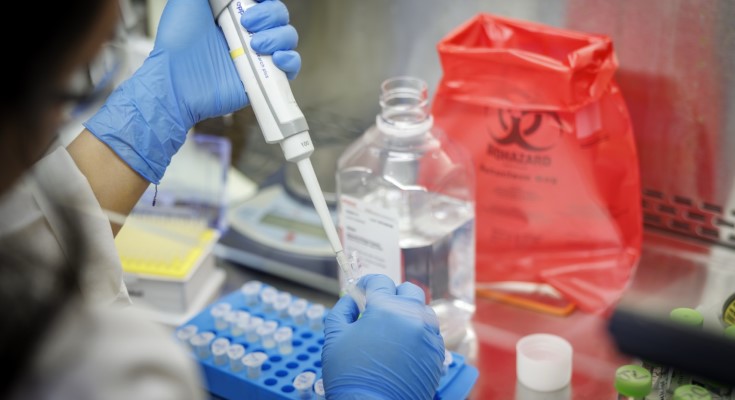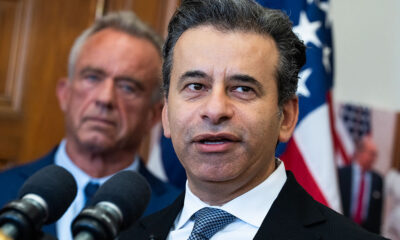World
Pennsylvania Reinforces Biosecurity Amid Avian Influenza Threat

HARRISBURG, PA — Pennsylvania is intensifying its biosecurity measures in response to a significant threat posed by avian influenza, which endangers the state’s poultry industry valued at approximately $7.1 billion. On Tuesday, state agriculture officials reaffirmed their commitment to combating this crisis during a tour of the Pennsylvania Veterinary Laboratory. Deputy Secretary for Animal Health and Food Safety, Lisa Graybeal, emphasized the vital importance of early testing and stringent biosecurity protocols as the most effective strategies against Highly Pathogenic Avian Influenza (HPAI).
The urgency of these measures follows the recent confirmation of new infections at six poultry farms in Lancaster County, impacting nearly 58,000 birds. Since the onset of the latest HPAI outbreak in February 2022, Pennsylvania has experienced the loss of more than 7.1 million birds across 100 flocks in 23 counties, marking it as one of the most severe animal health crises in the state’s history.
Laboratory Efforts and Funding Initiatives
Graybeal attributed the state’s strategic and coordinated response to its investment in laboratory testing, which has played a crucial role in minimizing losses and ensuring the safety of Pennsylvania’s poultry products. “Testing to monitor and detect avian influenza has been an indispensable tool to minimize damage during what has been the biggest animal health crisis in American history,” Graybeal stated. She praised the collaboration among veterinary teams, farmers, and state partners in their ongoing efforts toward recovery and prevention.
The state operates three diagnostic facilities located in Harrisburg, University Park, and Kennett Square, which processed over 672,000 animal health samples in the past year. A fourth laboratory at Penn State’s Beaver Campus is currently under renovation, expected to enhance capacity and reduce response times. This facility is backed by a $6 million investment in the 2024–25 budget, with an additional $2 million proposed for the following year’s operations.
The importance of on-farm biosecurity was emphasized by State Veterinarian Dr. Alex Hamberg, who stated, “When every farm has a biosecurity plan and everyone who enters follows it, disease risks are lower and recovery is quicker.”
Support for Affected Farmers and Industry Outlook
To assist farmers impacted by the outbreak, the Shapiro Administration has allocated nearly $15.7 million in HPAI Recovery Grants to 292 applicants, with an additional $59.6 million earmarked for future support. The administration’s budget proposal for 2025–26 includes another $11 million to sustain funding for recovery and prevention initiatives.
Industry leaders have praised the state’s ongoing support during this challenging period. “Pennsylvania has set a gold standard for animal disease response,” remarked Chris Herr, Executive Vice President of PennAg Industries. He highlighted how the state’s laboratories, grants, and coordinated responses ensure that poultry farmers can recover and maintain their businesses.
Looking ahead, experts caution that the upcoming months will be critical as migratory birds, known carriers of HPAI, traverse through the region. Renewed infections could disrupt poultry exports, tighten egg supplies, and potentially drive up food prices. Nonetheless, Pennsylvania’s expanded testing network and recovery funding are anticipated to help mitigate the economic fallout and support long-term stability in the poultry industry.
With poultry representing a significant sector in Pennsylvania’s agricultural landscape, maintaining consumer confidence and ensuring the resilience of farmers remain top priorities for state officials. The comprehensive surveillance and funding model being implemented in Pennsylvania could serve as a valuable example for other agricultural states facing similar biosecurity threats.
-

 Science2 weeks ago
Science2 weeks agoResearchers Challenge 200-Year-Old Physics Principle with Atomic Engines
-

 Politics2 weeks ago
Politics2 weeks agoNHP Foundation Secures Land for 158 Affordable Apartments in Denver
-

 World6 days ago
World6 days agoBoeing’s Aircraft Production: Assessing Numbers and Challenges
-

 Health2 weeks ago
Health2 weeks agoNeuroscientist Advocates for Flag Football Until Age 14
-

 Lifestyle2 weeks ago
Lifestyle2 weeks agoLongtime Friends Face Heartbreak After Loss and Isolation
-

 Lifestyle4 days ago
Lifestyle4 days agoTrump’s Push to Censor National Parks Faces Growing Backlash
-

 Entertainment5 days ago
Entertainment5 days agoSyracuse Stage Delivers Lively Adaptation of ‘The 39 Steps’
-

 Science5 days ago
Science5 days agoAI Misidentifies Doritos Bag as Gun, Triggers Police Response
-

 Politics4 days ago
Politics4 days agoNFL Confirms Star-Studded Halftime Show for Super Bowl LVIII
-

 World2 weeks ago
World2 weeks agoGlobal Military Spending: Air Forces Ranked by Budget and Capability
-

 Lifestyle5 days ago
Lifestyle5 days agoRed Bluff High School’s Elli Nolan Named Rotary Student of the Month
-

 Health2 weeks ago
Health2 weeks agoFDA Launches Fast-Track Review for Nine Innovative Therapies









